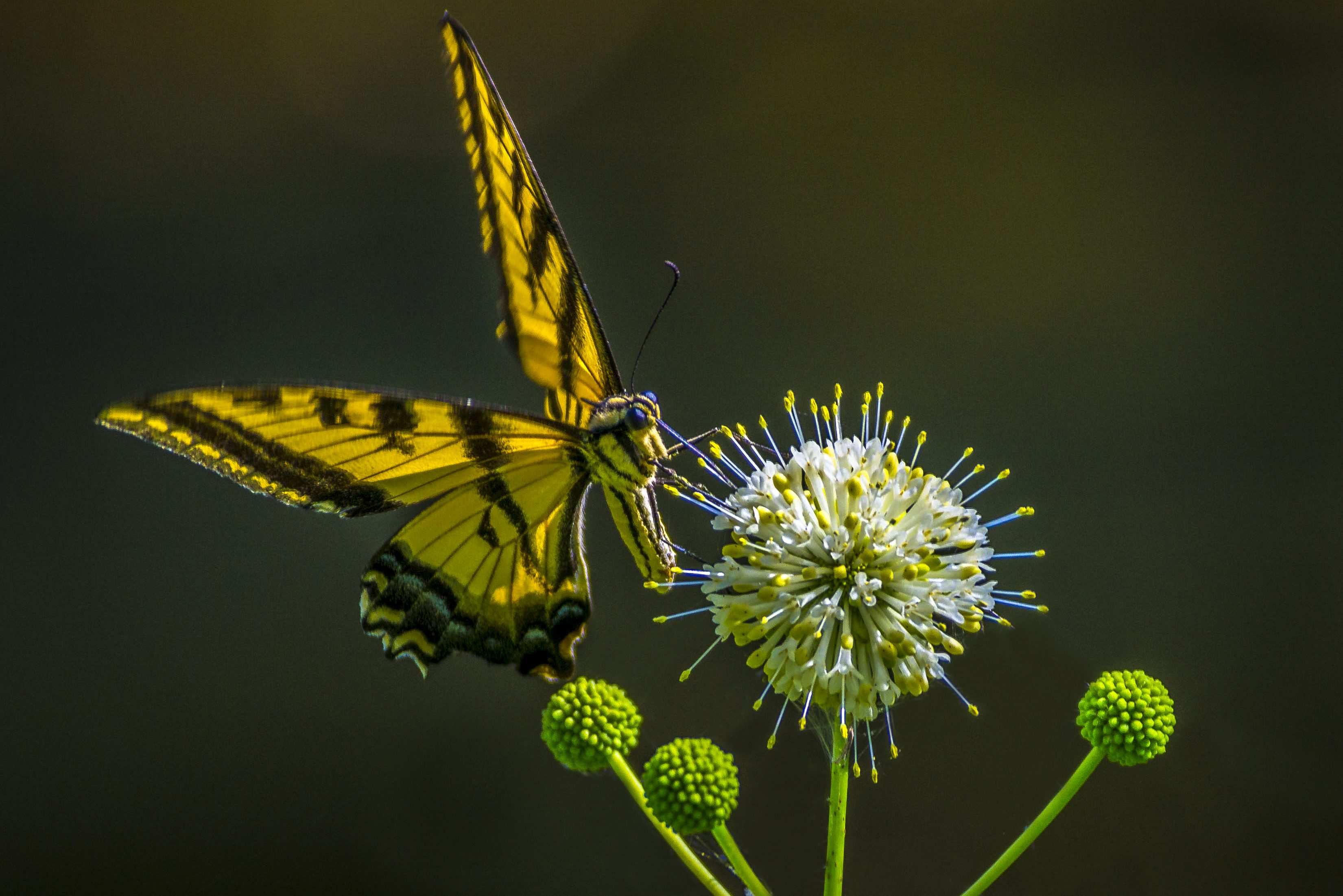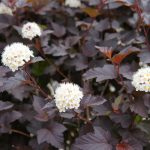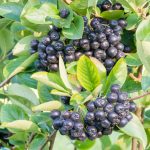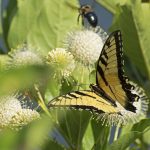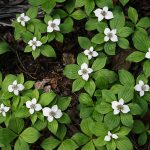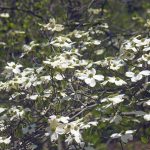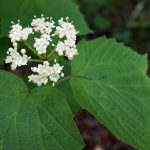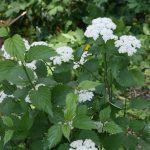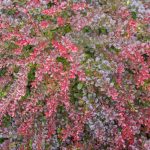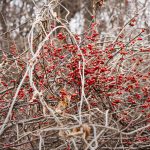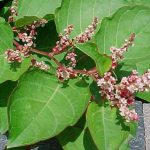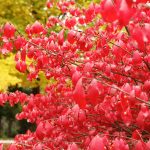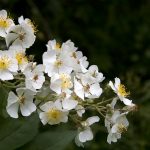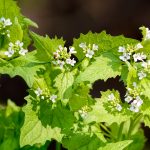This post is part of a series about the research of faculty members who are seeking to understand the impact of climate change here in Connecticut, and to work toward environmentally sustainable solutions.
Whether on the roadside, next to your office building, or in your own backyard, you don’t need to look very hard to find an invasive plant species in Connecticut.
From the very first green tufts of barberry making their appearance in early spring, to the blazing red burning bush on display in the fall, some invasive plants are so numerous it seems as if they will take over entirely.
“In some cases, invasive species are so far along, it’s hard to eradicate them from certain areas,” says Jessica Lubell, an associate professor of plant science and landscape architecture in UConn’s College of Agriculture, Health, and Natural Resources, whose research focuses on identifying native species as alternatives to invasive exotic species in landscaping.
A Long History
Invasive species in New England go back a long way. Ever since the first Europeans arrived, they brought plants for food and medicine from home to the colonies. In later years, as ornamental plant collecting became popular, one recognizable invasive species – the Japanese barberry – started on North American soil as a specimen plant at Harvard University’s Arnold Arboretum. Now it is widespread, and in some states is still sold as a landscaping plant.
After farms and houses were abandoned and forests began to regenerate, barberry readily proliferated in the light shade afforded by the trees of the young forest, often along stone walls, shading out native plants and eventually taking over the understory.
Through her research and observations Lubell has noticed some areas, notably an urban park in Boston with a history of barberry growth, where conditions have changed such that barberry no longer flourishes and is now being replaced by other vigorous invasive plant species.
This is a familiar story, shared with many other invasive, exotic species marching across New England.
‘Biological Pollution’ – What makes a plant invasive
With arresting names like ‘dog-strangling vine,’ ‘goutweed,’ and ‘hairy jointgrass,’ it’s a wonder these plants have seemingly snuck in and taken over areas of the landscape without much notice.
According to invasive.org, these and other invasive exotic plants may not be invasive in their native habitats, where they have evolved side by side with animals that eat them and possibly diseases that keep their numbers in check. In new areas, however, they generally lack these native control measures, and can form thick mats of vegetation that strangle, shade, and increase grazing pressures for native plants.
In Connecticut, deer grazing exacerbates the problem, because deer don’t eat invasive species but instead zero in on native plants. Just like humans, deer prefer to eat what they are most familiar with.
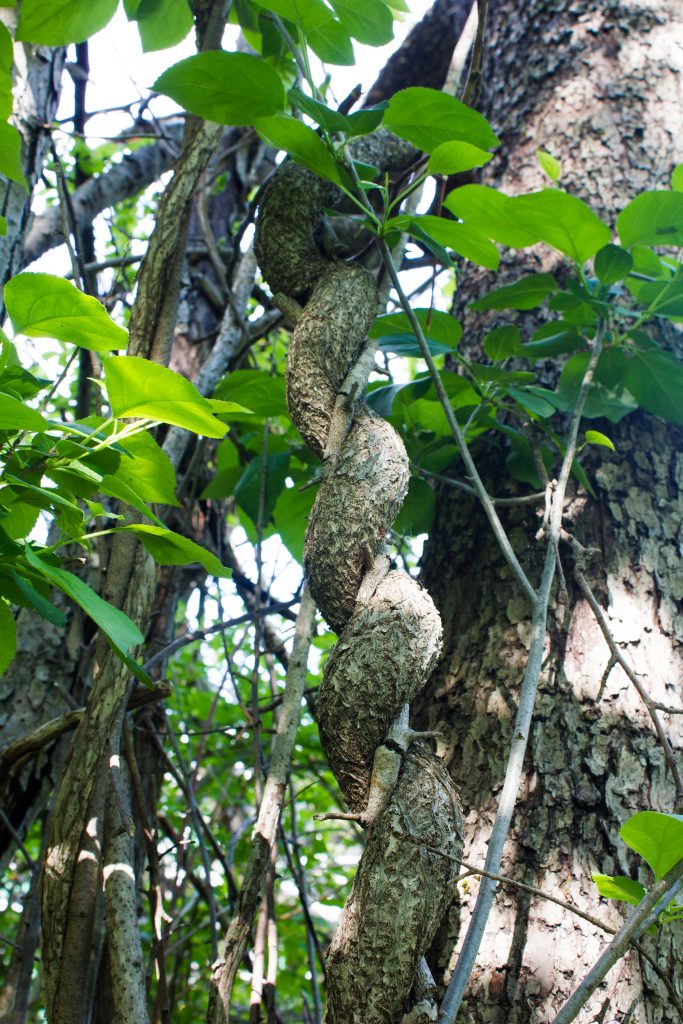
Exotic invasive plants also gain an advantage over native plants through a variety of other means, Lubell says. They may leaf out earlier in the season than some native plants, getting a head start on photosynthesis and making carbohydrates to start new growth. Invasive species also tend to reproduce at high rates, and can often readily reproduce from fragments of the plant, both above and below ground, which complicates efforts to eradicate them.
Oriental bittersweet is an example: “It can regenerate from even the smallest root piece,” Lubell says.
Especially in areas that get little to no management, invasive species are rapidly changing the landscape in the region, according to the Connecticut Invasive Plant Working Group.
When lack of management is coupled with advantages in reproduction, the plants can grow essentially unchecked and are able to out-compete native plants.
Preserving biodiversity
Native plants support native animals and are important components of the food chain. Without them, we will also lose diversity further up the chain. As these plants disappear, so will the insects, birds, and other animals that depend on them.
Lubell is working to increase the number of native species available in commercial nurseries to replace the use of invasives in landscaping and thereby help preserve the region’s biodiversity. The task starts with finding a suitable native plant.
She says many aspects of a candidate plant must be taken into consideration, including its appearance and adaptability to different conditions, if the plant is to appeal as a component of a landscape planting. She also looks for plants that will support both native pollinators and native animals.
Once a potential candidate is found, she tests the plant for its adaptability in various applications, from plantings in yards to commercial settings, and in both high- and low-traffic areas, all to see how well the plant survives when faced with the various pressures in each location.
The plants also need to be easily propagated in a large-scale, commercial setting, if they are going to be successful in making their way to the market at a saleable quality, Lubell says. “Some native plant species are very difficult to propagate, and these aren’t the best candidates.”
One plant she and her team recently explored was a pretty, and not very common, plant called New Jersey tea that was found growing in a park near the Storrs campus. It’s popular with pollinators, but also with deer, so she and UConn insect researcher David Wagner installed a fence around it to protect the plants.
Lubell says this particular plant may be a challenge to commercialize, both because it is difficult to propagate, but also because it can experience a lot of winter dieback and its growth tends to vary from year to year. Consumers want consistency, she notes.
Lubell has also studied buttonbush and sweetfern, and is currently working with a sweetfern cultivar that she hopes to patent soon.
She is not the only UConn researcher working to increase the number of native plants species available for landscaping purposes. Horticulture professor Mark Brand recently patented two Aronia, or black chokeberry, cultivars, and plant science professor Yi Li is has developed a seedless variety of burning bush, Euonymus, that gives landscapers and homeowners the option of continuing to plant this popular shrub without the qualities that make it invasive.
What can we do?
- As with any garden, the best way to manage invasive plants is to keep on top of them. Pull them, removing as much of the plants as possible, and check back regularly. Other measures that can be used in extreme situations include herbicides and fire, used sparingly and very carefully.
- Once the invasive species are under control or eradicated, plant native species and keep them well guarded from deer and other plant-eating animals. While many native plants are attractive to deer, there are also a few that are deer-resistant.
- If you do plant any exotic species, be sure to choose those that are non-invasive. Not all exotic species are invasive, and some native species can become weedy, so be sure to do sufficient research before selecting your plants. A helpful resource is Connecticut’s list of nearly 100 plants that are invasive and potentially invasive. A number of plants on the list are still readily available at garden centers, even though some species are illegal to plant.
- Ask for native plants at nurseries and home and garden centers. If there’s a demand, more native species will be made available.
Plant these:
Pull these:
Listen to the writer, Elaina Hancock, discussing the climate change series with the UConn 360 podcast:
